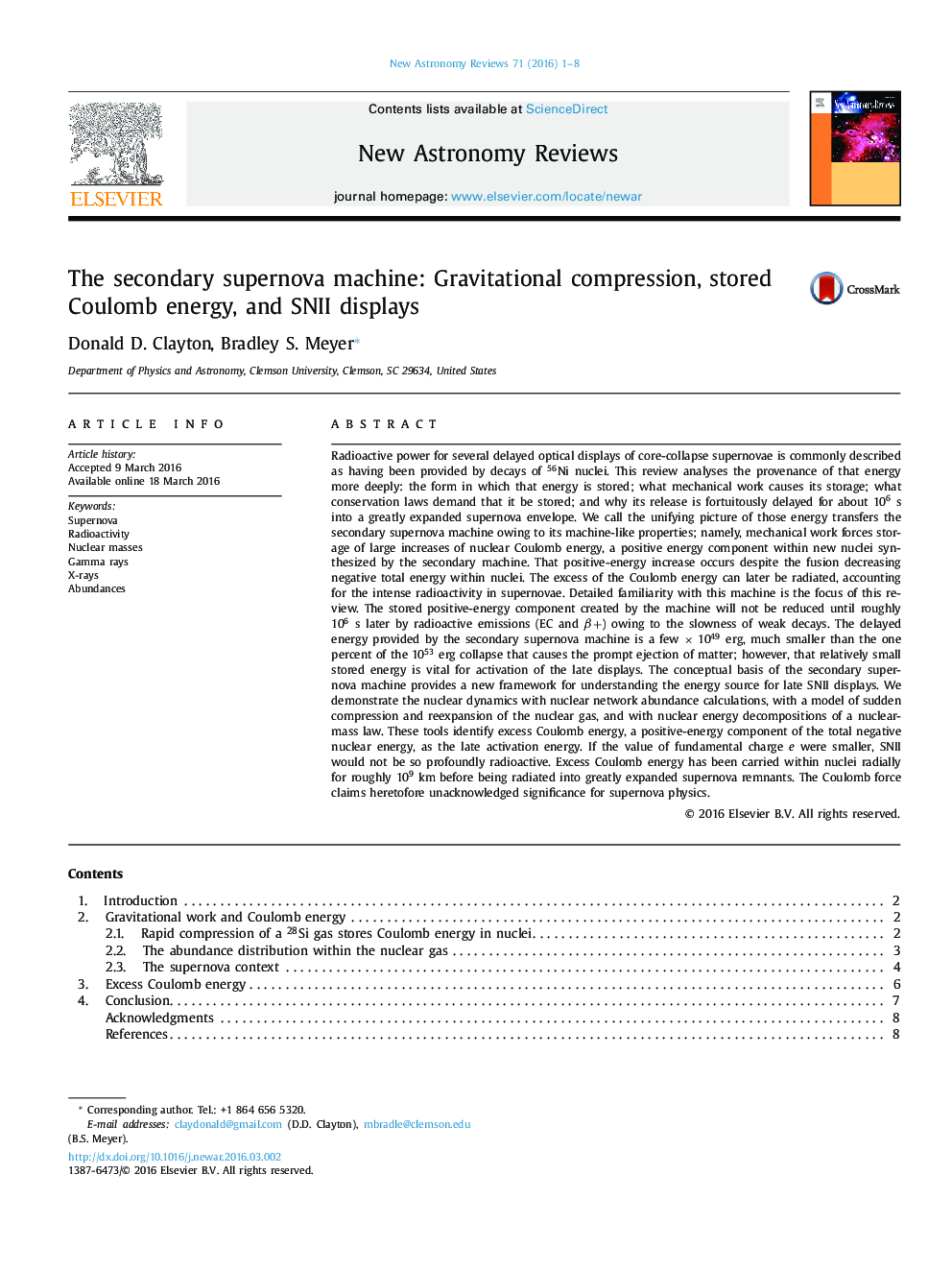| کد مقاله | کد نشریه | سال انتشار | مقاله انگلیسی | نسخه تمام متن |
|---|---|---|---|---|
| 1779881 | 1523773 | 2016 | 8 صفحه PDF | دانلود رایگان |
Radioactive power for several delayed optical displays of core-collapse supernovae is commonly described as having been provided by decays of 56Ni nuclei. This review analyses the provenance of that energy more deeply: the form in which that energy is stored; what mechanical work causes its storage; what conservation laws demand that it be stored; and why its release is fortuitously delayed for about 106 s into a greatly expanded supernova envelope. We call the unifying picture of those energy transfers the secondary supernova machine owing to its machine-like properties; namely, mechanical work forces storage of large increases of nuclear Coulomb energy, a positive energy component within new nuclei synthesized by the secondary machine. That positive-energy increase occurs despite the fusion decreasing negative total energy within nuclei. The excess of the Coulomb energy can later be radiated, accounting for the intense radioactivity in supernovae. Detailed familiarity with this machine is the focus of this review. The stored positive-energy component created by the machine will not be reduced until roughly 106 s later by radioactive emissions (EC and β+β+) owing to the slowness of weak decays. The delayed energy provided by the secondary supernova machine is a few × 1049 erg, much smaller than the one percent of the 1053 erg collapse that causes the prompt ejection of matter; however, that relatively small stored energy is vital for activation of the late displays. The conceptual basis of the secondary supernova machine provides a new framework for understanding the energy source for late SNII displays. We demonstrate the nuclear dynamics with nuclear network abundance calculations, with a model of sudden compression and reexpansion of the nuclear gas, and with nuclear energy decompositions of a nuclear-mass law. These tools identify excess Coulomb energy, a positive-energy component of the total negative nuclear energy, as the late activation energy. If the value of fundamental charge e were smaller, SNII would not be so profoundly radioactive. Excess Coulomb energy has been carried within nuclei radially for roughly 109 km before being radiated into greatly expanded supernova remnants. The Coulomb force claims heretofore unacknowledged significance for supernova physics.
Journal: New Astronomy Reviews - Volume 71, April 2016, Pages 1–8
